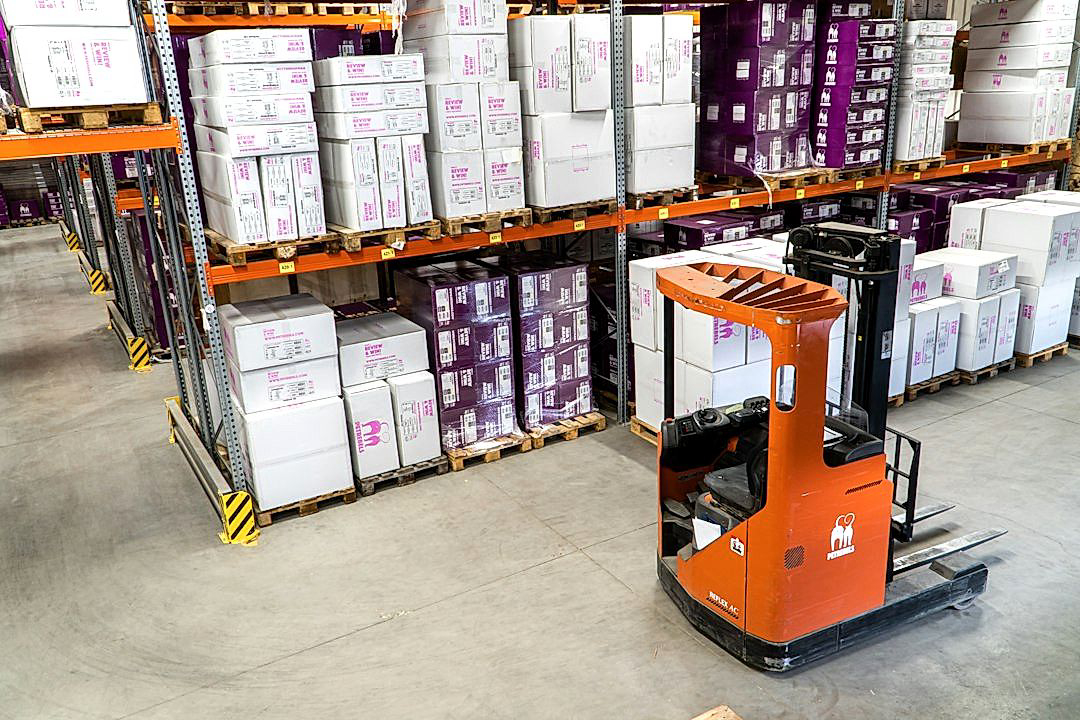Understanding customer demand and ensuring produce availability is a crucial aspect for any retailer in the produce industry.
However, achieving an accurate inventory forecast is far from simple.
It involves numerous variables such as seasonality, weather conditions, and consumer preferences to predict demand accurately.
This article aims to provide key strategies to enhance inventory forecasting accuracy for produce retailers.
With an effective forecast, retailers can avoid food waste, overstocking, or missing out on potential sales.
Initially, it’s important to understand the factors influencing the inventory forecasting process and the potential implications of an inaccurate forecast.
Contents
Inventory Forecasting Strategies For Produce Retailers
1. Use advanced predictive analytic tools.
This opening discussion will focus on the importance and strategic utilization of advanced predictive analytic tools by produce retailers in their inventory forecasting strategies.
Predictive analytics have been an increasingly popular tool in optimizing inventory control for retailers.
The application of predictive analytics in produce inventory forecasting is of utmost importance due to the perishable nature of the products.
By leveraging data and utilising modern predictive analytics, retailers can anticipate demand, integrate sales forecasts into their supply chains, and ultimately reduce food waste while maximizing profits.
Predictive analytics can be applied in numerous ways in the field of inventory forecasting.
For one, it can be utilized in forecasting customer demand, by collecting and analyzing historical sales data and predicting future sales based on patterns found within this data.
Additionally, predictive analytics can help retailers anticipate factors impacting inventory demand like weather patterns, holidays, and competitor pricing.
Another key area where predictive analytics adds immense value is in assessing the shelf life of the produce.
Special predictive models can provide vital insights regarding the best timeline for what produce can be sold fresh and which should be earmarked for processed goods, essentially optimizing waste management.
The power of predictive analytics also extends to forecasting foreseeable supply chain disruptions.
For instance, retailers can anticipate supply shortages based on externalities like adverse weather conditions or global crises, and establish contingency plans, making the supply chain more resilient and efficient.
While the value of predictive analytics is undeniable, it is important to remember that predictive models are only as good as the data they’re based on.
Therefore, data quality, accuracy, and timeliness are of essence in ensuring accurate forecasting and driving strategic decision-making.
Reliable predictive analytics tools will seamlessly integrate with a retailer’s existing systems, centralize data collection, and provide real-time insights, thereby enhancing the retailer’s responsiveness to rapidly changing market conditions.
Today, there are numerous advanced predictive analytics tools available, offering a range of features tailored to meet different needs and budgets of retailers.
Produce retailers looking to revolutionize their inventory forecasting need to adopt a forward-thinking mindset and recognize the potential of predictive analytics in transforming their operations for greater profitability and sustainability.
2. Monitor Seasonality and Weather Forecasts
For produce retailers, understanding seasonal patterns and weather forecasts is crucial to effective inventory forecasting.
The availability and quality of many produce items can vary significantly depending on the time of year.
For instance, strawberries might be abundant and high-quality in the late spring and early summer, but become scarce or lower quality as the year progresses.
Thus, in order to accurately forecast inventory needs, retailers must keep a close eye on seasonality.
Some retailers may find it helpful to create a seasonal inventory calendar that lists the peak seasons for different produce items.
Such a calendar can help retailers anticipate changes in supply and adjust their inventory orders and pricing strategies accordingly.
Similarly, weather forecasts can also play a significant role in inventory forecasting for produce retailers.
Weather conditions can have a major impact on crop yields, and thus on the availability and prices of various produce items.
When weather forecasts predict difficult conditions for certain crops, retailers may need to adjust their inventory plans to account for potential shortages or price increases.
An exceptionally cold winter or a particularly hot summer can drastically affect the availability and cost of certain fruits and vegetables.
By keeping an eye on long-term weather forecasts, retailers can make better-informed predictions about future inventory needs.
This can allow them to proactively adjust their orders and avoid being caught short of popular items or overstocked with produce that is in low demand.
In conclusion, monitoring seasonality and weather forecasts is a vital strategy for inventory forecasting in the produce retail industry.
By staying ahead of these trends, retailers can ensure they always have the right products at the right time, leading to improved customer satisfaction and increased sales.
Retailers that neglect these factors are likely to find themselves often having to react to unforeseen changes rather than proactively managing their inventory.
3. Regularly review sales data.
In an industry as dynamic and sensitive as produce retail, regular review of sales data is essential for effective inventory prediction.
Observing and analyzing sales trends including the types of items sold, as well as the quantity, is a vital undertaking for produce retailers.
One of the benefits of frequent analysis of sales data is that it provides a holistic overview of how your inventory performs at different periods.
Historical sales data, beyond just providing information on past transactions, learn and anticipate future sales trends and demands.
Consistently documenting and examining sales data, help to grasp patterns and variation in consumer buying behavior.
This understanding is essential in making informed decisions on what to stock and when.
Thus, a comprehensive understanding of sales data affords produce retailers the flexibility to adapt their inventory forecasting to observed trends and seasonality.
The active monitoring of sales data is a proactive inventory management strategy that prevents overstocking or under-stocking, which often result in unnecessary business costs or missed sales opportunities.
It’s vital to note that while sales data provides useful insights, it isn’t infallible, and other factors such as sudden shifts in consumer demand, weather patterns, or a global pandemic may affect the accuracy of predictive data.
However, despite these unpredictable variable factors, regular review of sales data remains a critical factor in inventory forecasting.
It is, therefore, no overstatement to say that successful inventory forecasting for retailers in the produce industry is largely hinged on consistent and thorough sales data analysis.
The power to make accurate inventory predictions is, indeed, embedded in the patterns, trends, and information distilled from sales data.
This makes sales data analysis not just a number-crunching exercise or business activity but a strategic process for successful inventory forecasting.
By keeping a watchful eye on sales trends and using advanced analytics to draw insights, retailers in the produce industry can optimise their inventory, eliminating waste, and maximising profit.
Diligent sales data review, therefore, takes retailers from mere speculative inventory forecasting to precise, data-driven, and efficient inventory predictions.
4. Maintain supplier relationships.
Your supply chain is the backbone of your retail business, especially for perishable products like produce. It’s vital you establish and maintain positive relationships with your suppliers.
Produce retailers rely heavily on their supplier relationships not just for procuring stock, but for understanding what will be available and when; this knowledge is invaluable when it comes to inventory forecasting.
Working closely with your suppliers allows you to gather more accurate information regarding product seasonality, harvesting schedules, and anticipated yield. This information is key to predicting inventory needs accurately.
Moreover, by developing strong relationships with your suppliers, you’ll also be better equipped to negotiate prices, terms, and delivery schedules, giving you more control over your inventory.
Suppliers can also provide insight into upcoming trends and products, providing you with the opportunity to stay ahead of your competition. A good supplier can act as a partner, helping you make strategic decisions to boost sales and profitability.
Having a supplier that is willing to collaborate with you not only guarantees a continuous supply of goods, but also aids you in understanding and expecting market trends, empowering your inventory forecasting.
When analysing historical sales data, it’s valuable to make regular contact with your suppliers. They are often privy to information that can signal a disruption in supply that might not be evident in your sales data.
For instance, adverse weather conditions or disease outbreaks that affect the production of a certain type of produce can disrupt your supply chain. Having a good relationship with your suppliers allows you to be forewarned and plan accordingly.
Remember to communicate your needs clearly and frequently, and to give as much notice as possible of any anticipated changes in your order quantities. Transparency is a two-way process and can only be beneficial in the long run.
Realize that your suppliers are running a business too. Respect their operating procedures and payment terms, and do your best to adhere to them. This builds trust and allows for smoother business operations.
Finally, while it can be challenging to maintain so many different supplier relationships, it’s useful to use technology to help manage those interactions. Utilize supplier relationship management (SRM) systems to improve communications, streamline processes, and strengthen your relationships.
Overall, maintaining good supplier relationships should be a key component of your inventory forecasting strategy. They not only ensure a consistent stock of products but also provide invaluable data and insights for planning and strategizing future inventory requirements.
5. Implement a Dynamic Pricing Strategy
The concept of dynamic pricing strategy has become fundamental in the world of retail, famously utilised by industries such as airline and hospitality.
As a produce retailer, it is vital for you to understand how to implement dynamic pricing strategies to maximise profit and minimise waste.
Let’s first define what dynamic pricing is: it is a strategy where businesses adjust prices based on algorithms that consider market demand and other external factors.
Dynamic pricing strategies can be an effective tool for produce retailers to optimise their pricing relating to inventory changes, market demand fluctuations, and seasonal variations.
The primary motivation for employing this approach is to maximise profit margins while minimising the likelihood of spoilage or waste.
Dynamic pricing can also help you to react swiftly to changes in demand relating to seasonality, weather patterns, or local events.
For instance, when you suspect an impending increase in demand (such as during specific holiday seasons), you can raise prices to take advantage of increased willingness to pay.
Conversely, if you predict a decrease in demand or an abundance of supply (for example, due to an unforeseen weather event), you can reduce prices to ensure that your inventory doesn’t go to waste.
The crucial thing, however, is knowing how to execute this strategy effectively by making data-driven decisions.
So, how do we implement dynamic pricing strategy in the context of produce retailing effectively?
The first step is to use predictive analytics to understand how external variables such as weather and market demand impact your pricing.
Next, it’s important to monitor your sales data constantly, tracking the movements and velocity of your SKUs and, based on that predictive data, adjust your prices in real-time.
You must pay close attention to your supplier relationships as well, as a pricing strategy can fail without solid partnerships with reliable, high-quality, and affordable suppliers.
Finally, it’s not enough to set a pricing strategy in motion and forget about it; dynamic pricing is most effective when it’s used as a fluid, ongoing strategy that adapts to accommodate changing circumstances.
As such, continually employing advanced predictive analytic tools to assess the effectiveness of the strategy and finetune it based on the results is essential.
By incorporating dynamic pricing into your inventory forecasting strategy, you will be well-equipped to stay competitive, maximise profitability, and minimise waste in your produce retail business.
The Bottom Line
Through robust strategizing and implementation of essential practices such as adopting advanced predictive tools, monitoring seasonality and weather influences, meticulously reviewing sales data, cultivating strong supplier relationships, and adapting a dynamic pricing strategy, businesses can significantly drive supply chain efficiency.
Continuously enhancing these elements is vital to staying ahead of potential disruptions, meeting customer expectations, and ultimately ensuring the long-term success of a business.
It’s evident that no solitary method works in isolation; instead, it is the combined effect of these strategies that help in optimizing the supply chain to its fullest potential.




